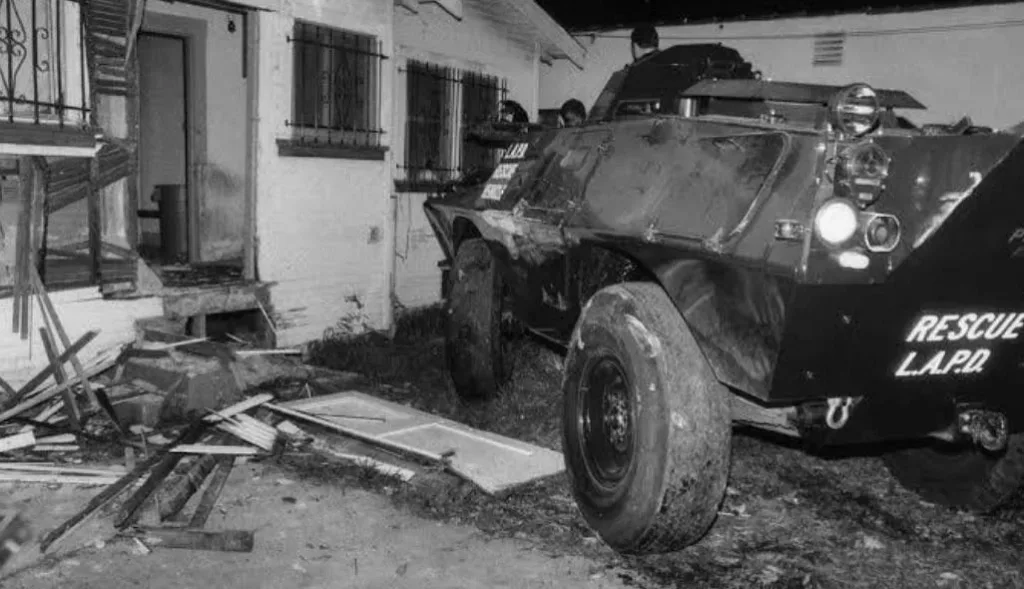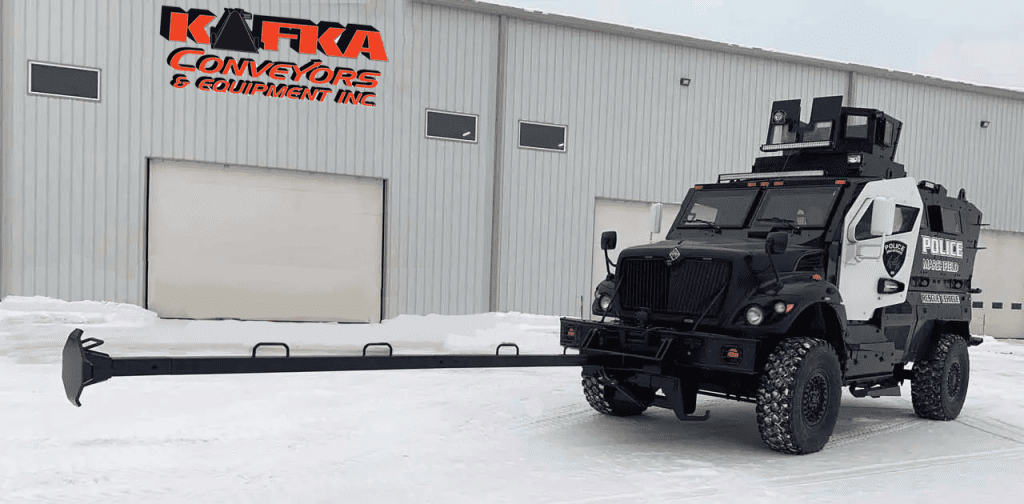
In early February of 1985, a Los Angeles Police Department (LAPD) informant made a controlled purchase of rock cocaine through a metal slot in the front door of a Pacoima residence in the San Fernando Valley region of LA. Several days later LAPD served a SWAT search warrant at the residence
The home was fortified with steel bars and a steel door. SWAT surrounded the house and announced their presence over the loudspeaker. When the residents did not come to the door, a diversionary explosive “flash-bang” device was thrown into the house and the battering ram attached to the SWAT V-100 an armored personnel carrier pierced the wall of the house to create an entry point. Accounts of the warrant service differ claiming that no prior warning was given to the occupants other than a by-stander’s shouts of “Police!” as SWAT officers drove the ram through the exterior or wall of the house simultaneously detonating flash-bangs in the room.

Inside was resident Linda Brown and her child as well as Dolores Langford and her two small children. Police found only a small amount of marijuana and no guns; Brown’s husband, Antonio Johnson, who was not home at the time of the warrant service was later arrested on suspicion of selling cocaine. No injuries occurred during the service of the warrant.
The Langford Decision on Battering Rams
The Plaintiffs sued for damages on the grounds that the LAPD’s practice of using the motorized battering ram and flashbangs constitutes excessive force. Additionally, they applied for an injunction to prohibit the ram and flashbangs in searches of occupied dwellings. The LAPD responded that the use of the ram and flashbangs were justified by the “fortress-like” rock houses. The house fortifications were meant for much mor than deterring burglaries; they had steel bars on exterior windows, multiple steel doors forming a barred “cage” for entry, and thick boards bolted across entries.
The trial court agreed with LAPD and denied plaintiffs’ motion for injunctive relief. However, the court was concerned about the use of the motorized battering ram as a destructive and dangerous means of forcible entry into an occupied dwelling without judicial oversight. The court held that intrusive body searches without special warrant are considered unreasonable even when performed incident to a valid arrest and on probable cause. (People v. Scott (1978). Based upon that reasoning and because of the risks to occupants and neighbors, deployment of the ram to enter dwellings is considered presumptively unreasonable unless authorized in advance by a magistrate except in exigent circumstances.
SWAT Search Warrants
Due to the Langford v. Superior Court (1987) 43 Cal.3d 21 ruling, SWAT teams that plan on deploying motorized battering rams on vehicles like BearCats, MRAPs, BATT-X, or Rook should include a court order authorizing its use. This court order should be backed by a justification that addresses the following:
- The need for the ram.
- What fortifications are present.
- Why other options are not feasible.
- What information is available about the structure and what steps have been taken to mitigate the risk of collapse, fire, or electrical injuries.

